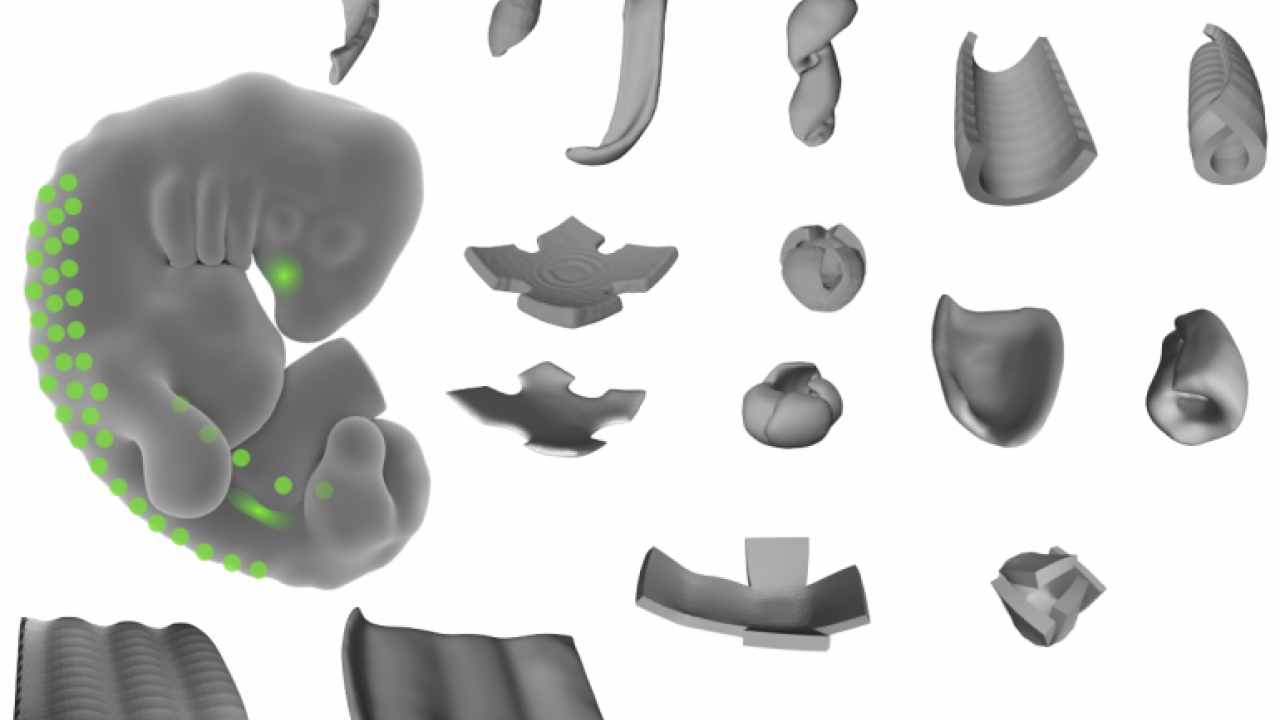
Scientists used contractile mesenchymal cells from mouse embryos to power self-folding living tissues. Image by Zev Gartner Lab/UCSF
In the journey from egg to embryo to mature organism, our bodies stretch and wrinkle and fold like a fabulously intricate piece of origami. Now UC San Francisco bioengineers have shown that many of the complex folded shapes that form mammalian body plans and internal tissue structures can be re-created with very simple instructions, setting the stage for future applications ranging from lab-grown organs to soft biological robots.
In their new paper – published Dec. 28, 2017, in the journal Developmental Cell – the researchers found that specialized cells called mesenchymal cells play a special role in folding some tissues during development. Like spiders pulling on their webs, these cells can reach out to tug on the network of ropelike extracellular matrix (ECM) fibers that cells naturally secrete around themselves for structural support.
When mesenchymal cells in different parts of a tissue pull on the web of ECM fibers in tandem, the researchers found, they create forces within the tissue that can cause it to bend and fold into a variety of shapes, from the finger-like villi that line the gut and aid in digestion to the buds that eventually form an animal’s hairs or feathers.
The researchers then demonstrated that they could apply these natural developmental processes to re-create tissue folding in tissue samples in the laboratory. By laying down specific patterns of mouse or human mesenchymal cells, the researchers could cause thin slabs of living tissue to fold themselves into bowls, coils, and ripples, as well as more abstract shapes like cubes not typically found in nature.
“Development is starting to become a canvas for engineering, and by breaking the complexity of development down into simpler engineering principles, scientists are beginning to better understand, and ultimately control, the fundamental biology. In this case, the intrinsic ability of mechanically active cells to promote changes in tissue shape is a fantastic chassis for building complex and functional synthetic tissues,” said senior author Zev Gartner, PhD, an associate professor of pharmaceutical chemistry in the UCSF School of Pharmacy, a Chan Zuckerberg Biohub investigator, and co-director of the UCSF Center for Cellular Construction, a collaborative center whose aim is to “turn biology into an engineering discipline.